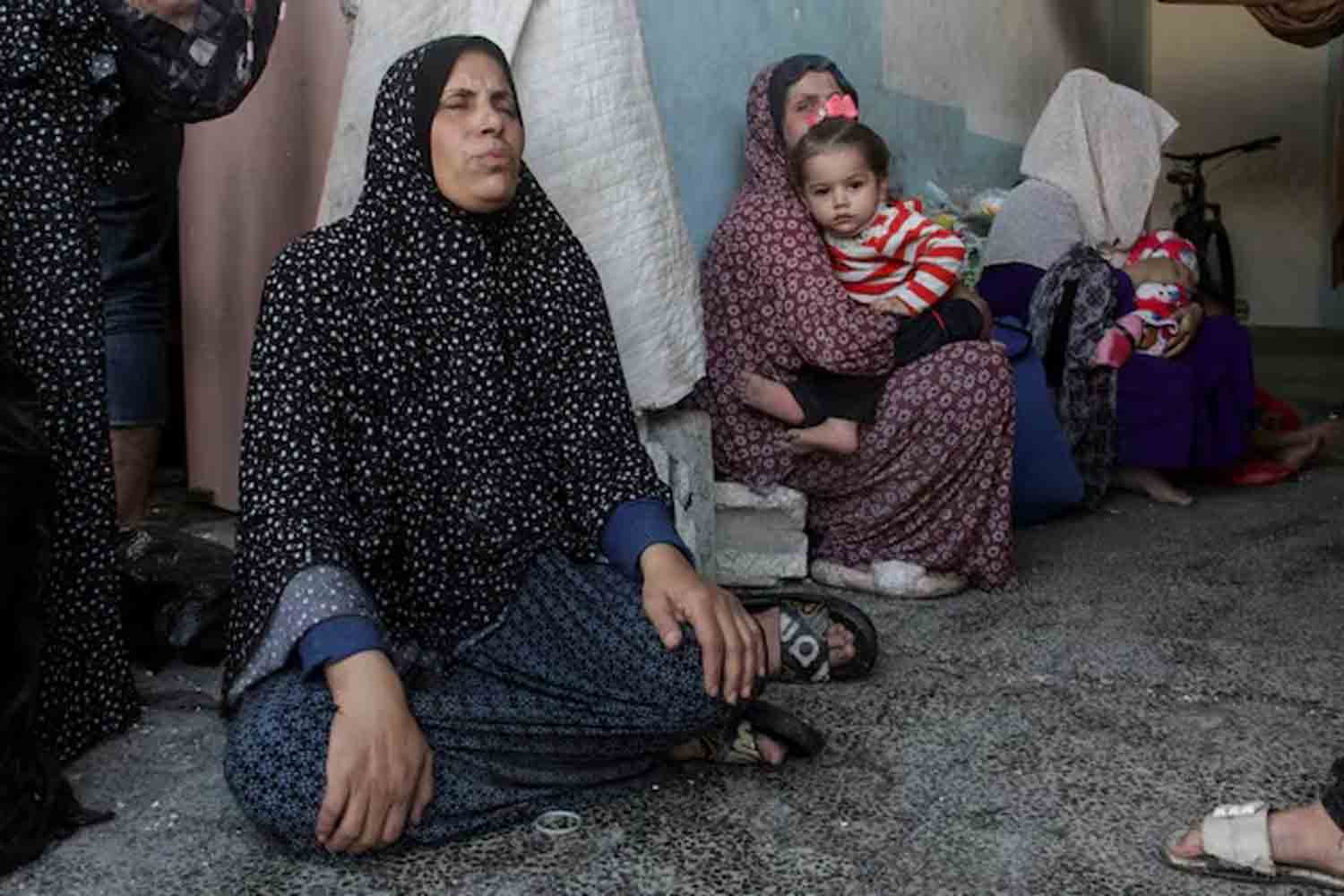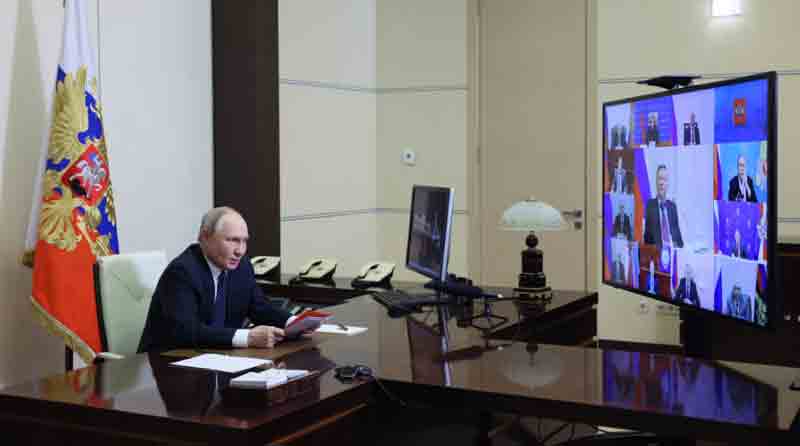For Iran‘s clerical leadership, negotiating with the “Great Satan” to secure a nuclear agreement and alleviate severe sanctions may, for once, represent the lesser of two undesirable options. Despite harboring significant distrust towards the United States, particularly under President Donald Trump, Tehran is increasingly alarmed that rising public frustration over economic difficulties could lead to widespread protests, according to four Iranian officials.
Consequently, even though Iran’s clerical leaders maintain a firm public stance and assertive rhetoric, there exists a pragmatic inclination within Tehran’s political circles to reach an agreement with Washington, the officials noted. Tehran’s anxieties have been heightened by Trump’s rapid reimplementation of his first term’s “maximum pressure” strategy, aimed at reducing Iran’s oil exports to nearly zero through additional sanctions, thereby crippling the already vulnerable economy.
President Masoud Pezeshkian has consistently emphasized the dire economic conditions in the Islamic Republic, asserting that the current situation is more severe than during the Iran-Iraq war of the 1980s, and recently pointed to the latest U.S. sanctions targeting vessels transporting Iranian oil.
One Iranian official expressed concern that completely severing diplomatic channels could exacerbate domestic dissatisfaction directed at Ayatollah Ali Khamenei, who is the ultimate authority in the Islamic Republic. “There is no doubt that the individual who has served as Supreme Leader since 1989 and his foreign policy choices bear more responsibility than anyone else for the current situation,” stated Alex Vatanka, director of the Iran Program at the Middle East Institute in Washington.
Iran’s struggling economy compelled Khamenei to cautiously support the nuclear agreement reached with major powers in 2015, which resulted in the easing of Western sanctions and a subsequent improvement in economic conditions. However, after President Trump withdrew from the nuclear deal in 2018, his renewed campaign against Iran further deteriorated living standards.
“The situation deteriorates every day. I can’t pay my rent, settle my bills, or buy clothes for my children,” lamented Alireza Yousefi, a 42-year-old teacher from Isfahan. “Now, with additional sanctions, survival will become impossible.” The Iranian foreign ministry did not provide a response to a request for comment.
‘ON EQUAL TERMS’
While intensifying pressure on Iran through new sanctions and military threats, Trump also extended an invitation for negotiations by sending a letter to Khamenei suggesting nuclear discussions. Khamenei rejected the proposal on Wednesday, asserting that Washington’s demands were excessive and that Tehran would not be coerced into talks.
“If we engage in negotiations while facing maximum pressure from the other side, we will be at a disadvantage and achieve nothing,” stated Iran’s chief diplomat, Abbas Araqchi, in an interview with the Iran newspaper published on Thursday.
“The other side must recognize that the pressure strategy is ineffective; only then can we negotiate on equal footing,” he emphasized. A senior Iranian official acknowledged that reaching an agreement was the only viable option, although the path would be challenging due to Iran’s mistrust of Trump following his withdrawal from the 2015 agreement. Iran has managed to avoid economic collapse primarily due to China, its main oil purchaser and one of the few countries still engaging in trade with Tehran despite the sanctions.
Oil exports experienced a significant decline after Trump withdrew from the nuclear agreement, but they have rebounded in recent years, generating over $50 billion in revenue for both 2022 and 2023 as Iran discovered methods to bypass sanctions, as per estimates from the U.S. Energy Information Administration.
However, there remains uncertainty regarding the long-term viability of these exports, as Trump’s maximum pressure strategy continues to target Iran’s crude oil sales through various sanctions on tankers and related entities.
PUBLIC DISCONTENT GROWS
The Iranian leadership is also grappling with a range of additional challenges, including energy and water shortages, a plummeting currency, military difficulties with regional allies, and increasing apprehension about a potential Israeli attack on its nuclear sites—all exacerbated by Trump’s stringent policies.
The energy and water sectors are hindered by insufficient infrastructure investment, excessive consumption fueled by subsidies, decreasing natural gas output, and ineffective irrigation practices, resulting in power outages and water scarcity. Since the reimposition of sanctions in 2018, the Iranian rial has lost over 90% of its value against the dollar, according to reports from foreign exchange platforms, officials, and lawmakers.
In light of concerns regarding Trump’s harsh tactics, many Iranians are turning to dollars, other stable currencies, gold, or cryptocurrencies as safe havens for their savings, indicating a further decline in the rial’s value, as reported by state media.
The cost of rice has surged by 200% compared to last year, according to reports from state media. Additionally, housing and utility expenses have sharply increased, with some areas in Tehran and other major cities experiencing rises of approximately 60% in recent months. This surge is attributed to the significant depreciation of the rial and escalating raw material prices, as reported by various media outlets.
While official inflation rates are reported to be around 40%, some Iranian analysts suggest that the actual figure exceeds 50%. The Statistical Center of Iran has noted a considerable increase in food prices, with more than a third of essential goods rising by 40% in January, resulting in prices that are more than double those from the same month last year.
In January, the Tasnim news agency cited Ebrahim Sadeghifar, the head of Iran’s Institute of Labor and Social Welfare, stating that between 22% and 27% of Iranians now live below the poverty line. Meanwhile, Iran’s Jomhuri-ye Eslami newspaper reported last week that poverty rates are approximately 50%.
“I can hardly manage to pay the rent for my carpet shop or my employees’ wages. No one has the funds to purchase carpets. If this situation persists, I will have no choice but to let my staff go,” said Morteza, 39, in a phone interview from Tehran’s Grand Bazaar, providing only his first name.
“How do they expect to address the economic crisis if they refuse to engage with Trump? They should just talk to him and come to an agreement. You can’t afford to be proud when you’re hungry.”
NUCLEAR RED LINE
According to reports from Iranian state media, February saw at least 216 protests throughout Iran, involving a diverse group of participants including retirees, workers, healthcare professionals, students, and merchants. These demonstrations primarily addressed economic challenges, such as inadequate wages and prolonged periods without salary payments.
Although the protests were generally small in scale, officials express concern that worsening living conditions could lead to significant unrest. “The country resembles a powder keg, and additional economic pressure could ignite it,” remarked one official closely associated with the government.
The ruling class in Iran is highly cognizant of the potential for a resurgence of unrest akin to the protests that erupted in 2022-2023 following Mahsa Amini’s death in custody, as well as the nationwide demonstrations in 2019 triggered by fuel price hikes, according to the officials.
A senior Iranian official indicated that there have been multiple high-level discussions regarding the likelihood of new mass protests and strategies to prevent them.
Despite these concerns about possible unrest, Iranian officials maintain that Tehran is willing to engage in limited discussions with Trump, emphasizing that “excessive demands,” such as the dismantling of Iran’s peaceful nuclear program or its conventional missile capabilities, are non-negotiable. “While we acknowledge the worries about increasing economic pressure and the rising discontent among the populace, we cannot compromise our right to develop nuclear energy simply because Trump desires it,” the senior official stated.
Ali Vaez, the Iran project director at the International Crisis Group, stated that the leaders of Iran perceive negotiating with Trump under duress as a sign of weakness, which they believe would lead to increased pressure rather than alleviating it.
He added, “This is why Ayatollah Khamenei appears to think that the only thing more perilous than enduring sanctions is capitulating to them.”
Discover more from Defence Talks | Defense News Hub, Military Updates, Security Insights
Subscribe to get the latest posts sent to your email.





